Energetic, almonds are also renowned for being rich in vitamin E, fibre, calcium, magnesium and lipids. Widely used in cosmetics and in cuisines across Mediterranean and Middle Eastern regions, almonds enhance savoury dishes and pastries, whole, slivered or ground into powder. And of course they can be eaten fresh, picked directly from tree!
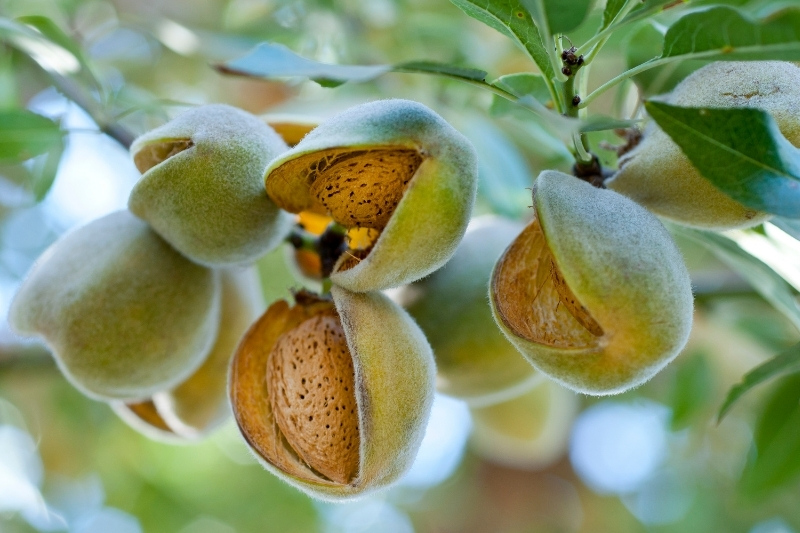
Almonds at ripeness
To enjoy these delicious fruits with multiple virtues and unique flavour, here is how to harvest and store them.
Almond tree fruiting cycle
Almond flowering occurs in February–March, before appearance of leaves. Numerous floral buds release pretty 5-petalled flowers, white or pink depending on cultivar or variety. Pollination is carried out by wind and bees. Then almonds appear: a non-edible green then dark brown husk cracks open, revealing a stone whose shell is hard or soft depending on varieties. Inside are one or two seeds: the kernels. It is this part that is edible.
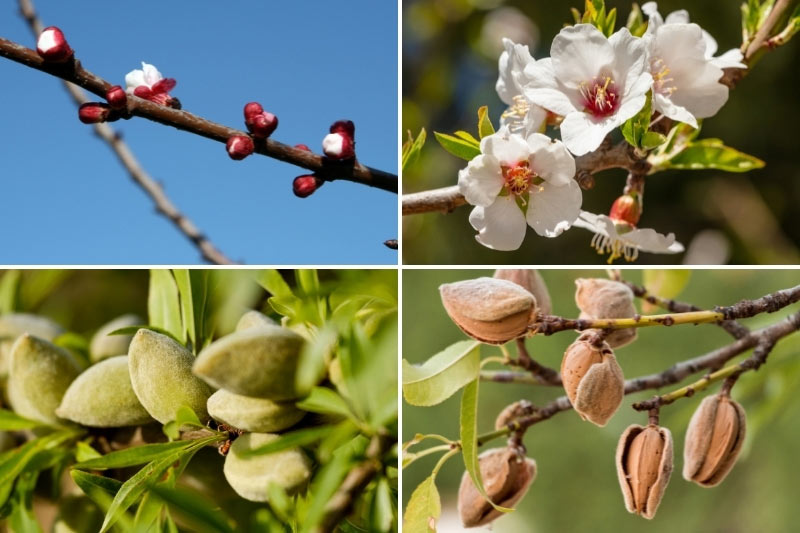
Buds, flowers, green almonds and ripe almonds
How to tell when almonds are ripe?
- Harvest of fresh almonds, green, takes place in May–June or until July depending on climate. It is customary to harvest between 10 and 25 days before full ripeness. At this stage almonds have a mild milky taste.
- Harvest of dried almonds occurs in autumn, from late August, sometimes until September–October, again depending on climatic and growing conditions. Husk of a ripe almond has split and curled back, revealing the woody shell containing the edible part. They also begin to fall to ground.
How to harvest almonds?
Almonds can be picked by hand, or knocked down with a long pole. If you have many fruits to gather, lay out a tarpaulin or a net under the tree to collect them more easily. Gently shake fruits with the pole to detach them from twigs without damaging them. You can remove husks on site or afterwards.
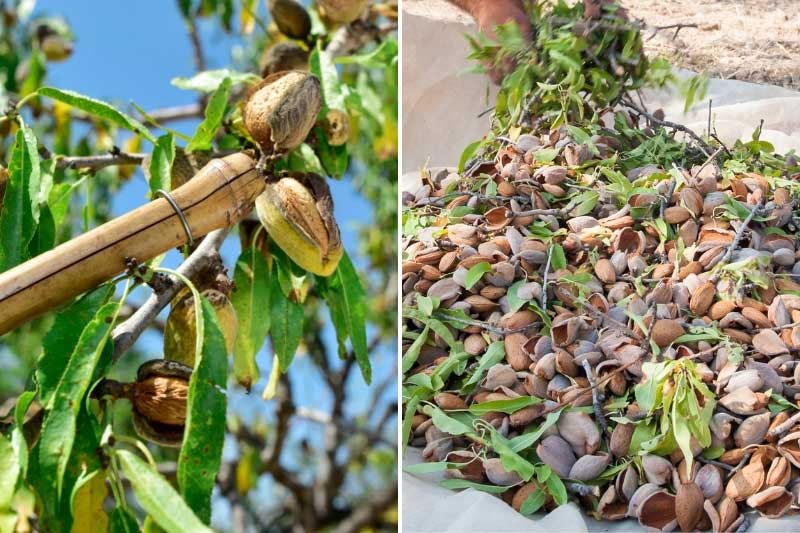
Harvesting almonds using a pole and a net
Warning: when foraging, taste a small piece of an almond before collecting more. If it tastes bitter, leave it alone! Eating more than 2 bitter almonds a day can be dangerous, even lethal in quantity, because they contain hydrocyanic acid, in other words cyanide!
How to store freshly harvested almonds?
Almonds are oleaginous fruits with a shell. It is this hard, woody husk that allows preservation. Once freed from their husk, almonds in their shell keep perfectly at room air for up to a year. Encourage air circulation by spreading them on a tray or in a basket, in a cool room. Turn them regularly to air them and watch for rodents raiding your harvest! This storage method allows consumption at leisure, breaking shells with a nutcracker.
If you prefer to crack almonds to extract them from their shell in one go, you can store them, like most dried fruits, in an airtight container, such as a glass jar. It should be dry, clean and fitted with a lid. Store containers preferably in a dark, dry place to keep crunchiness and avoid rancidity: a cupboard or larder will do perfectly.
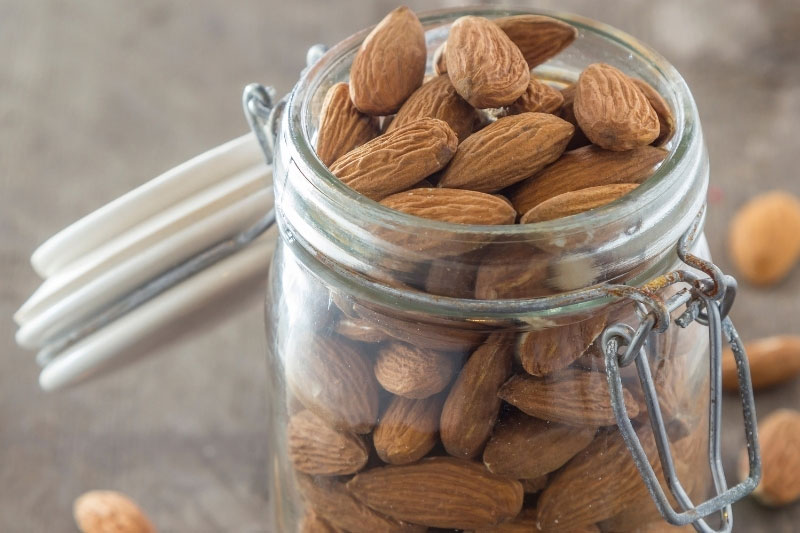
Storing almonds in an airtight jar
How to dry almonds?
Almond drying can be done simply with your oven or a dehydrator. This step prolongs storage life and gives a pleasant roasted taste.
- Remove almonds from their shell, taking care to discard damaged ones;
- Soaking almonds in salted water at ratio 1 tablespoon salt per 1 litre of water is recommended. This will neutralise phytic acid present in almonds and other oleaginous fruits; digestion and nutrient absorption will thus be easier. This step is optional;
- Dry almonds with a cloth or paper towel.
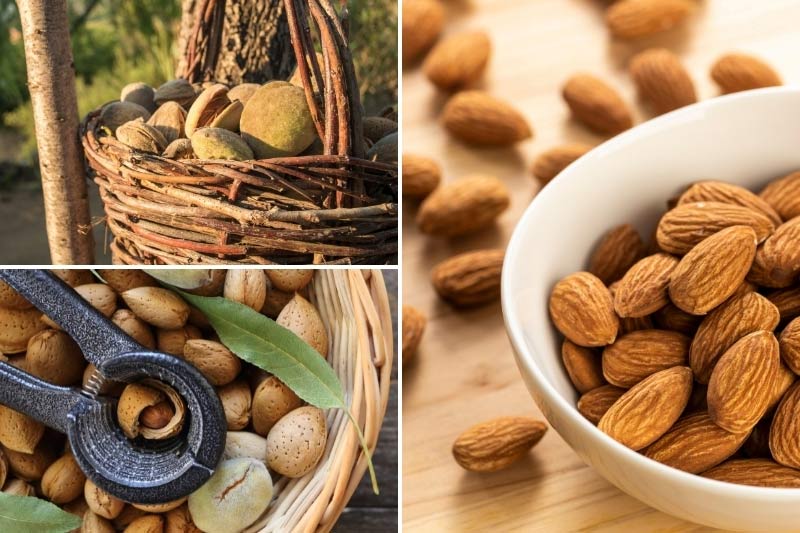
Almonds removed from shell ready for drying
Oven drying
- Preheat oven to 180° C;
- Spread almonds on a baking tray or dish in a fairly thin layer;
- Dry in oven for about fifteen minutes, turning halfway through. For a stronger roasted flavour, leave a few minutes longer;
- Remove from oven and let cool to room temperature.
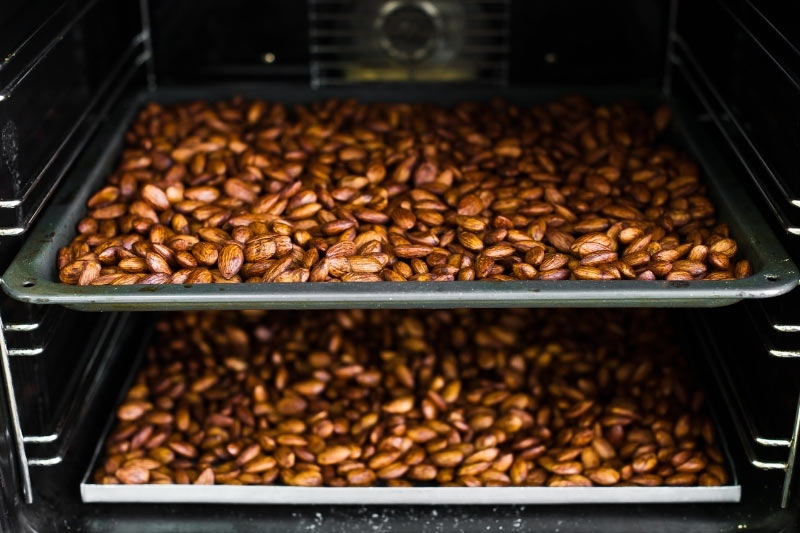
Dehydrator drying
- Spread almonds on dehydrator trays;
- Dehydrate at 45° C for 12 to 24 hours, following your device instructions, turning regularly. Time varies according to almonds' moisture content;
- Remove from dehydrator and let cool to room temperature.
Almonds dried this way should be stored in refrigerator or a cool, dark place in an airtight container. They will keep for 3 months. Beyond that, you can freeze them and take out portions as needed.
For more information, see our sheet: "Drying garden-harvested fruits for long-term storage".
What to do with shell remnants?
Think of valuing your waste! Broken shells can be used in the garden:
- as a substitute for clay balls to drain potted plants: place a thin layer of shells at bottom of pot and mix other crushed shells into the soil. Substrate will be lighter and better drained;
- as eco-friendly mulch in vegetable garden or borders.
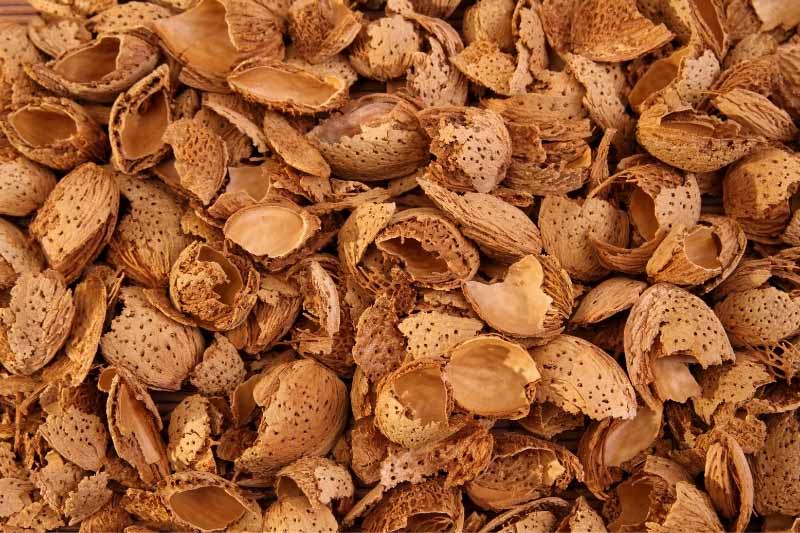






























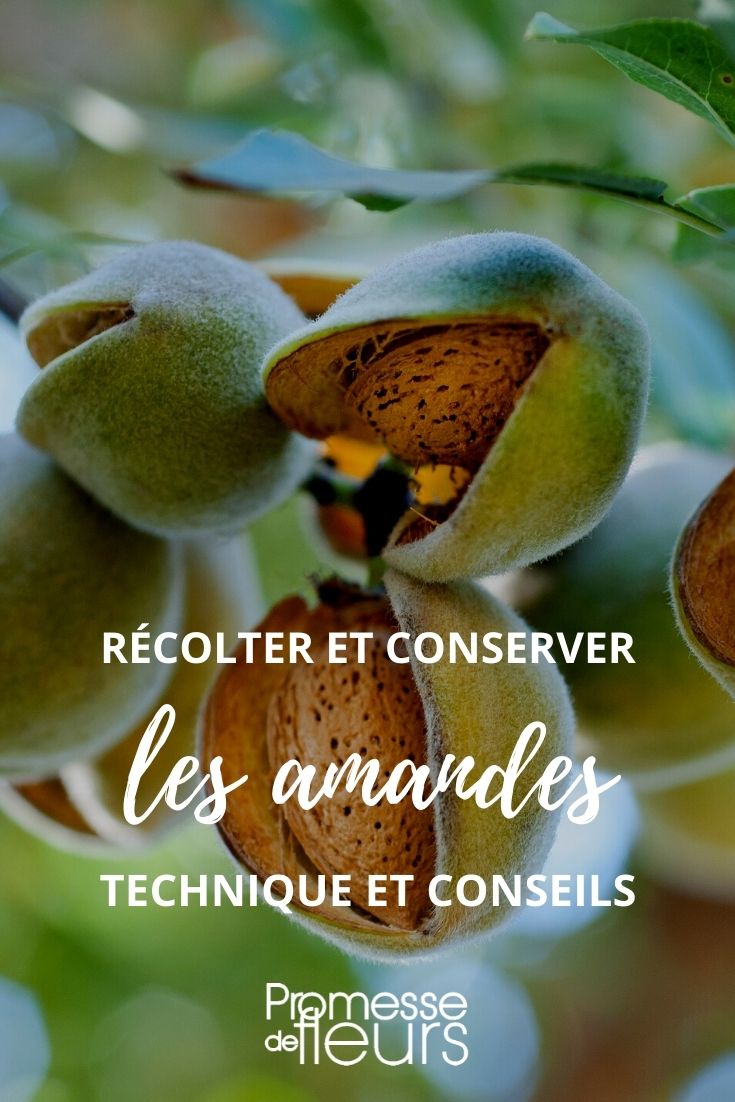
Comments